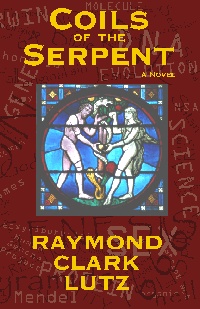HOW MUCH OF THIS NOVEL IS TRUE?
The science of biotechnology, DNA, the underpinnings of life, as well as all scriptural references, documents, artwork, and history depicted in this novel are factual.
So why make it fiction? I found that it was much more powerful to incorporate a cast of fictional characters who interpret and debate the revealed pattern, each coming from a distinctively different backgound.
While it is my belief that the theories discussed by these characters have merit, each individual reader must explore these viewpoints and come to his or her own conclusion. The reader may relate to the views of a specific character, whether it is Dan, agnostic about religion, Shannon, a biotechnologist and evolutionist, or John, a practicing Christian with an unexpected past.
After considering the various viewpoints, you may in fact be uncertain of your beliefs, and that may be a very healthy outcome. Some people may be quite disturbed by what they learn. However, my hope in writing this novel is that the story will serve as a catalyst and a springboard for people to discuss the important topics of science, faith, religion, and history.
IS THIS BOOK ANTI-CHRISTIAN?
I actually started my research on this topic with the assumption that I would not find the pattern within the Bible, but I surprised even myself. Some theologians may find the pattern match convincing authentication of those passages, while at the same time, perhaps uncomfortable that the traditional interpretation of the story has changed.
In the end, the book is not anti-anything, but instead an attempt to square the historic discovery of biotechnology in scriptural texts with the traditions of evolutionists and Christians.
ARE YOU A CHRISTIAN?
This is a common question because people want to know from what belief system the novel was written. Indeed, this book does challenge some of the traditional interpretations and doctrines of the church. The question is perhaps less important when you consider that whole topic of belief systems is explored by the characters, and the characters clearly come from differing points of view.
Because the book develops a unified and consistent philosophy that includes both scientific and religious experiences, it does not fit within the existing domains of belief systems available today. Indeed, no one will be completely happy with the facts that are exposed.
To be specific, however, I consider myself a student of many religions, and indeed, a follower of Jesus. The more I learn, the more questions I have. For me, the spiritual quest will be a life-long work in progress.
HOW DO EVOLUTIONISTS FEEL ABOUT YOUR NOVEL?
I worked very hard to create an accurate depiction of Darwin's original theory and attempted to square this with the surprising evidence that ancient scripture describes DNA and the detailed processes of life. Some evolutionists may be offended by the portrayal, as the patterns discovered in Genesis tend to put Darwin’s theories into question. By the same token, I expect that some theologians will be upset about the affect that the discovery of the patterns has on key doctrines of the church, such as the doctrine of original sin and the history of Christ.
DOES Coils of the Serpent SUPPORT INTELLIGENT DESIGN?
The popular debate posits a dichotomy with creationism, also known as intelligent design, as one option, and Darwinian evolution as the other. This novel tends to cast doubt on both popular alternatives while suggesting another set of possibilities as being more likely, especially given scriptural evidence. If you find the scriptural evidence attractive, you may have to reconsider some of your beliefs no matter what camp you are in.
DO YOU USE A LITERAL INTERPRETATION OF SCRIPTURE?
When people talk about a literal interpretation, they usually imply that they adopt the traditional literal interpretation of passages which are considered allegorical in nature. You will likely find that the methods used in Coils of the Serpent are actually more literal than traditional interpretations and that the pattern match is much more than random coincidence.
The question the reader will have to face is whether it is appropriate to consider alternative interpretations to passages which have had accepted meanings for centuries. If you allow such consideration, then the approach used in the book will probably be very convincing.
